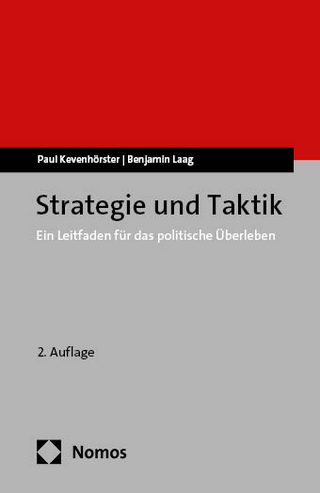
Internal Displacement and Conflict
Routledge (Verlag)
978-1-138-35426-5 (ISBN)
Grounded in multidisciplinary research, this book presents a methodical understanding of those displaced within their national borders, the Internally Displaced Persons (IDPs).
The IDP phenomenon remains less understood than that of refugees due to the "internal" nature of the crisis, linked to a nation’s sovereignty, which assigns the responsibility for care to the national actors as opposed to an international body. However, the IDP phenomenon poses an international humanitarian challenge, with upwards of 40 million people currently in internal displacement across the globe. This book helps answer the most perplexing questions surrounding conflict-induced protracted displacements: namely, how do positions embraced by key actors inform/influence IDP policies, and why, despite the promise of robust return packages, do families remain reluctant to return to home communities and equally reluctant to embrace new host communities? Capitalizing on the diagnostic tool kit known as Dugan’s Nested Model, uniquely adapted to the Kashmiri Pandit displacement, this book also analyzes issues of the similarly displaced communities of Nagorno-Karabakh, Abkhazia and South Ossetia, Kosovo, and Darfur regions.
This book will be of much interest to students of peace and conflict studies, humanitarianism, Asian politics, and International Law in general.
Sudha G. Rajput is Adjunct Professor at the School for Conflict Analysis and Resolution, George Mason University, Virginia, USA.
Foreword Kevin Avruch Acknowledgments Section I: Global Phenomenon of Internal Displacement, Kashmiri Pandits, Research Challenges, and Family Legacies 1. Global Phenomenon of Internal Displacement and Kashmiri Pandit Community 2. Context: Internal Displacement of Kashmiri Pandits 3. Challenge of Researching Protracted Displacements 4. Oral Account of One Kashmiri Pandit Family and the Legacies Left Behind Section II: Kashmiri Pandit Challenges and the Dilemma of Return 5. Methodical Analysis of Kashmiri Pandit Challenges 6. Moral and Political Dilemma of Return Section III: Policies, Assessment, Positions, and Complexity of Policymaking 7. Kashmiri Pandit Families Evaluate "Migrant" Policies 8. How Actor Positions Influence Policy Outcome 9. Complexity of IDP Policymaking Section IV: Understanding Kashmiri Pandit Displacement Through a Comparative Lens: Journeying into Azerbaijan, Georgia, Serbia, and Sudan 10. Azerbaijan: Displaced from Nagorno-Karabakh 11. Georgia: Displaced from Abkhazia and South Ossetia 12. Serbia: Displaced from Kosovo (Ethnic Serbs) 13. Sudan: Displaced from Darfur Section V: Findings, Best Practices, and Moving Forward 14. Findings, Best Practices, and Moving Forward
| Erscheinungsdatum | 19.02.2019 |
|---|---|
| Zusatzinfo | 2 Tables, black and white; 1 Line drawings, black and white; 1 Illustrations, black and white |
| Verlagsort | London |
| Sprache | englisch |
| Maße | 138 x 216 mm |
| Gewicht | 232 g |
| Themenwelt | Sozialwissenschaften ► Politik / Verwaltung ► Allgemeines / Lexika |
| Sozialwissenschaften ► Politik / Verwaltung ► Europäische / Internationale Politik | |
| ISBN-10 | 1-138-35426-0 / 1138354260 |
| ISBN-13 | 978-1-138-35426-5 / 9781138354265 |
| Zustand | Neuware |
| Haben Sie eine Frage zum Produkt? |
aus dem Bereich


